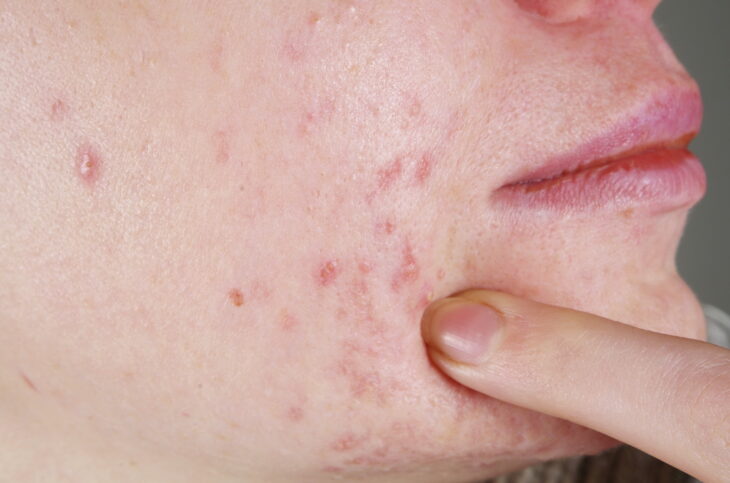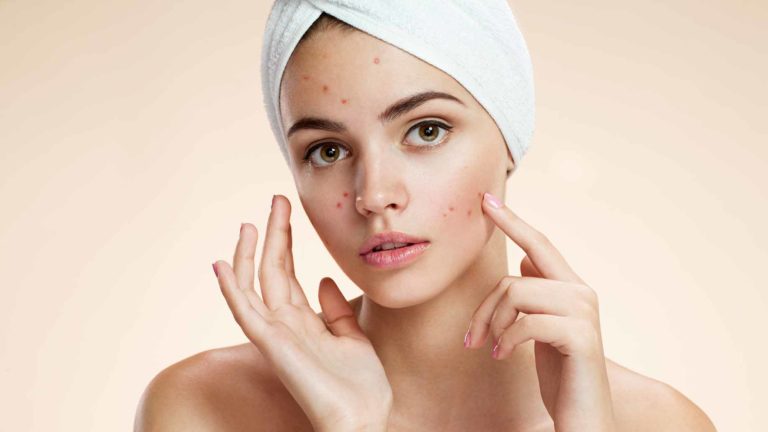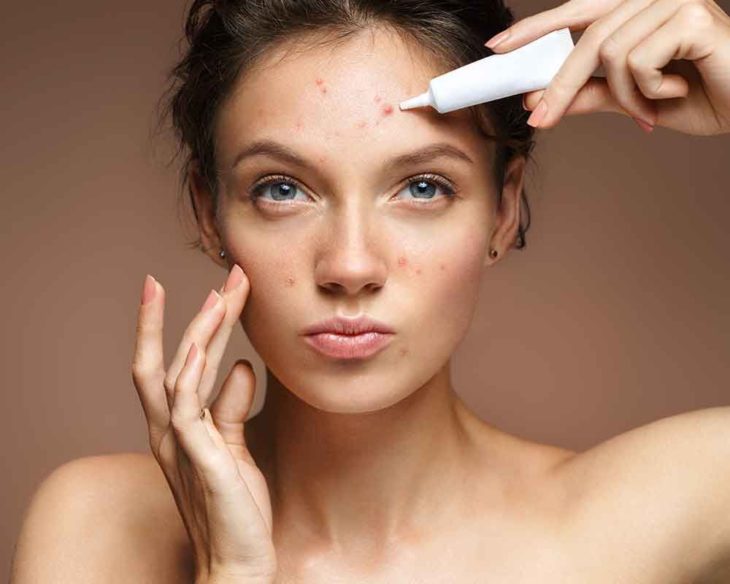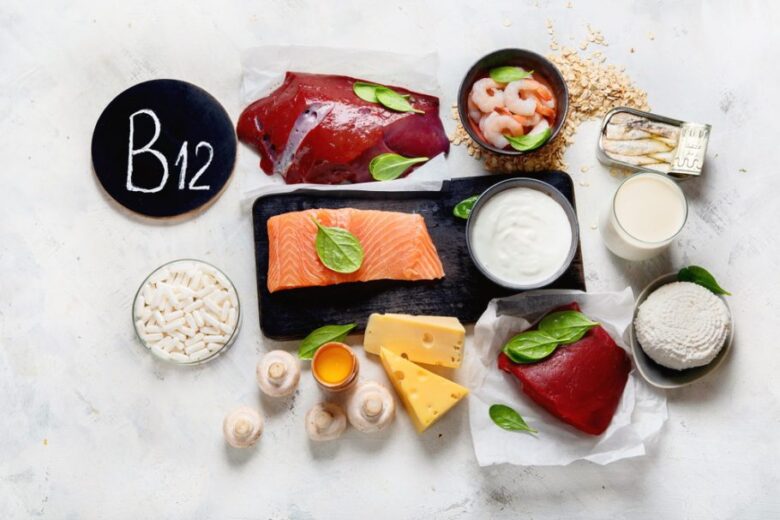Acne is a prevalent issue that has many different methods of treatment, from creams, lotions, and medications. There is another form of treatment that has proven to be quite effective; light therapy.
Contents
What is Acne?
First, the basics. Acne is a skin condition caused by the blockage of pores. It’s natural, and at one point, 85% of the world’s population will experience it in their lives.
While acne can appear anywhere on your skin, breakouts are more common on the face, back, shoulders, neck, and chest, because these are the areas where there are more sebaceous glands, which are the glands in our body that produce oil.

Source: evanaturals.com
Types of Acne
Though acne may be a common occurrence, no two cases of acne are the same. Acne can appear in different forms, and the two types of acne are non-inflammatory acne and inflammatory acne.
Non-inflammatory acne consists of:
- Whiteheads: Forming as small, raised bumps under the skin, whiteheads remain flesh-colored when present on the skin.
- Blackheads: this form of acne appears darker on the skin, and they open at the surface of the skin.
Inflammatory acne includes the following:
- Papules: These are small and tender bumps that are inflamed and uncomfortable to the touch.
- Pustules: Another term for pimples, these are the bumps with pus that accumulate on the skin, and they are caused by skin debris and bacteria.
- Cysts: Cysts are very painful, and they are filled with pus. These are lesions that occur deep under the skin and can measure half a centimeter in diameter. They also have the highest chance of leaving acne scars.
- Nodules: These lesions are firm and large, and they can be quite painful. They occur deep within the skin, but they do not have pus.
All acne forms start off as clogged pores, and time combined with other factors can cause the non-inflammatory forms of acne to burst and transform into inflammatory forms.
Stages
Once acne begins to present itself on the skin, it can develop into different stages of severity.
- Stage 1: This stage is mild acne, which generally appears as a small concentration of pimples or blackheads. This stage isn’t typically inflamed and can appear and disappear periodically with or without treatment.
- Stage 2: Stage 2 is when the acne becomes more moderate, and it can consist of pustules, blackheads, poles, and pimples. Acne of this stage appears more frequently, and in the affected areas, there may be redness or inflammation.
- Stage 3: This stage is moderate to severe acne, and in this stage, the acne is inflamed, and the skin appears red and irritated. There are likely papules, nodules, and cysts.
- Stage 4: Stage 4 of acne is the most severe stage, and the acne present in this stage is very painful to the individual inflicted with it. Generally, with this stage, acne is present on various parts of the body as pustules, cysts, nodules, and papules.
The stages of acne are classified based on the presence or absence of inflammation and the presence and widespread nature of lesions. Some of the stages may require an extensive treatment plan.

Source: remediesforme.com
What Causes Acne?
When acne begins to form on the skin, there are three key elements involved: oil production, dead skin, and bacteria.
The purpose of the sebaceous glands is to produce sebum, which is oil that is meant to lubricate your skin. Sometimes, oil glands produce more than what is needed, which can remain in pores and clog them.
The epidermis, which is the very top layer of skin, sheds dead skin cells regularly. It is how the skin renews itself, and the new cells are made in the deepest layer of the epidermis. By the time these new cells reach the outermost layer, they are dried out, and the process continues. The process of forming new cells doesn’t always work well, and sometimes the body produces more skin cells than normal, which blocks pores.
When oxygen cannot get into a pore because of dead skin cells and oil, it creates an anaerobic environment. Bacteria like P. acnes thrive in these conditions and can grow quickly.
Some forms of acne are driven by specific factors.
Hormones
Hormonal levels can fluctuate for different reasons: pregnancy, starting or ending birth control, and puberty. Hormones increase acne by increasing the amount of oil that the skin produces.

Source: pinterest.com
Biology
Acne can be genetic. If your parents experience acne, there is a higher chance that you will as well.
Stress
Stress can affect our endocrine and immune systems and taxing our bodies with a demanding schedule or little to no sleep can affect these systems and cause them to behave abnormally, like releasing more hormones.
Vitamin B12
Though this vitamin is important for skin health, high levels of it can lead to the overproduction of oil, which is directly correlated with the development of acne.

Source: eklinika.telegraf.rs
Using Light Therapy
One of the treatment options available to help get rid of acne is light therapy. Light therapy is the usage of low, safe wavelengths of light that are used on the body to treat conditions on the skin.
Blue light therapy is antimicrobial, and it fights to inactivate and kill different kinds of bacteria, even P. acnes. Blue wavelengths of light can also help reduce the size of oil glands, which can decrease oil production and pore blockages.
Red light therapy works on and below the surface of the skin, and it helps to reduce inflammation and repair damaged tissues. With acne, it can help improve the healing of active outbreaks and the appearance of existing scars. Like blue light therapy, red light therapy can also help reduce oil production.
One device available on the market is SolaWave’s Bye Acne Wand. The wand is an FDA-cleared light therapy spot treatment, and it effectively targets and treats acne. The one uses both blue light and red light therapy to treat acne at all stages of development, and each session is just 3 minutes. Results can be seen and as little as one to three sessions.
The Bye Acne Wand is very simple to use; you simply clean your skin, pat it dry, and hold the device over the area you want to treat. The best thing about it is it will automatically switch off when the session is complete. The device is small and portable, and you can take it with you anywhere.
